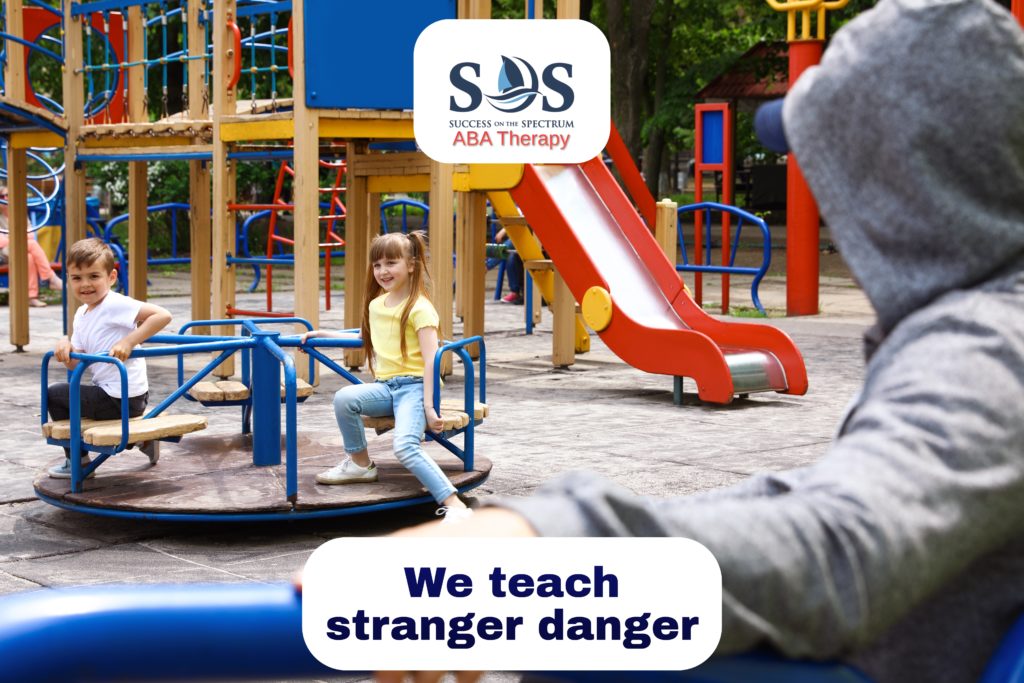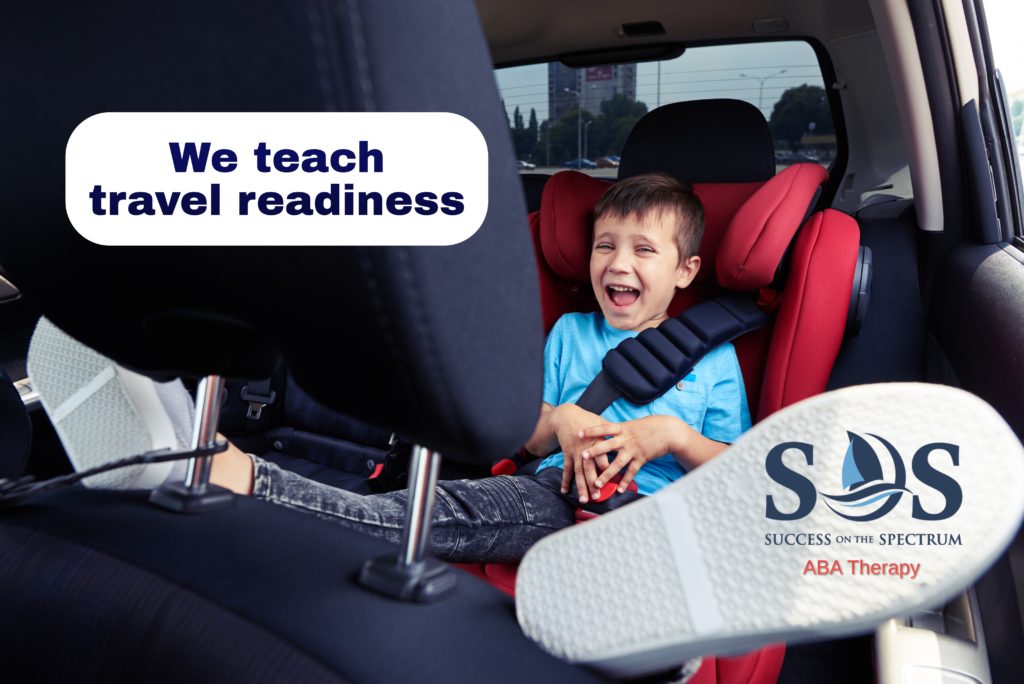Stranger danger training for autism in Lithia, FL, is essential in helping children build independence, confidence, and safety awareness. For many families, the concern isn’t just about teaching their child to avoid strangers, but ensuring they can recognize unsafe situations, respond appropriately, and seek help when necessary. Children with autism often face unique challenges, such as difficulty interpreting social cues, generalizing learned behaviors across different settings, or impulsively trusting unfamiliar people. These factors can make them more vulnerable in public spaces or community environments.
Applied Behavior Analysis (ABA) therapy provides a structured, evidence-based approach to teaching stranger danger skills. Through modeling, role-play, visual supports, and positive reinforcement, children learn practical steps such as identifying safe versus unsafe adults, maintaining personal boundaries, and using clear help-seeking strategies. Unlike traditional safety talks, ABA breaks these concepts into small, teachable steps, ensuring that progress is measurable and tailored to each child’s abilities.
Why Stranger Danger Matters for Children with Autism
For children with autism, understanding the concept of “stranger danger” can be far more complex than for their neurotypical peers. Many children on the spectrum struggle to identify unsafe situations, interpret social cues, or recognize when someone’s behavior is inappropriate. Their natural trusting nature or impulsivity may make them more likely to approach strangers without hesitation, which can put them at greater risk. Some of the most common challenges and risks include:- Difficulty identifying unsafe situations – children may not recognize when a stranger’s request is unusual or unsafe.
- Limited awareness of personal boundaries – they may not understand the concept of “too close” or “inappropriate touch.”
- Trusting nature – children may assume all adults are safe and well-intentioned.
- Wandering or elopement – leaving safe spaces without awareness of danger.
- Not recognizing unsafe requests – such as following a stranger, accepting gifts, or keeping secrets.
Establishing Stranger Safety Through ABA
One of the reasons ABA therapy is so effective for stranger danger training is its structured, step-by-step teaching approach. Instead of giving vague instructions like “don’t talk to strangers,” ABA breaks safety concepts into manageable actions that can be taught, practiced, and reinforced until they become second nature. Therapists work with children in one-on-one sessions, role-play scenarios, and community practice, ensuring that each skill is both understood and consistently applied. Some of the core strategies ABA therapists use to establish stranger safety include:- Task analysis – breaking down each safety routine into small, teachable steps (e.g., notice stranger → say “no” → walk away → find trusted adult).
- Prompting and fading – beginning with strong guidance and gradually reducing support as independence grows.
- Visual supports – using pictures, charts, or cards that show safe vs. unsafe adults and situations.
- Role-play and modeling – rehearsing common stranger situations in safe, supervised environments.
- Positive reinforcement – rewarding children with praise, tokens, or preferred items for correct responses.
Building Personal Boundaries & Awareness
Teaching personal boundaries is one of the most important aspects of stranger danger training for children with autism. Many children on the spectrum may not naturally recognize when someone is standing too close, asking inappropriate questions, or attempting unwanted touch. Without clear instructions, they may accept unsafe behavior simply because they don’t know how to respond. ABA therapy provides a structured way to help children understand these boundaries and practice safe responses in a supportive environment. Key focus areas for building personal boundaries and awareness include:- Personal space awareness – using visual markers, hula hoops, or floor spots to show the safe distance between themselves and others.
- Safe vs. unsafe touch – teaching examples of appropriate touch (high five, handshake) versus inappropriate touch (grabbing, hugging from a stranger).
- Polite refusal skills – rehearsing short responses like “No, thank you” or “I don’t like that” and practicing walking away.
- Recognizing red flags – learning to notice suspicious requests such as being asked to keep a secret, follow someone, or accept gifts.
Help-Seeking & Emergency Responses
Even with strong boundary training, children with autism need to know how to respond if they feel unsafe or become separated from a caregiver. ABA therapy emphasizes teaching clear, consistent help-seeking strategies that children can use in real-world situations. This empowers them not only to avoid danger but also to take action when they need assistance. Key skills taught in help-seeking and emergency response training include:- Identifying safe helpers – learning that police officers, teachers, store clerks, or uniformed staff are appropriate people to approach.
- Using emergency phrases – practicing short, clear statements such as “I need help,” “I’m lost,” or “This is not my parent.”
- Sharing important information – teaching children to provide their name, caregiver’s name, and a phone number when asked by a safe adult.
- Rehearsing emergency plans – role-playing what to do if they become separated in a grocery store, park, or crowded event.
- Recognizing unsafe helpers – learning that not every adult is safe and reinforcing the importance of choosing trusted figures.
Generalizing Skills in Community Settings
One of the biggest challenges for children with autism is generalization — the ability to apply a learned skill in new settings or with new people. A child may master a stranger danger routine in a therapy session but fail to use it in the park or grocery store. This is why ABA therapy strongly emphasizes practicing safety skills across multiple environments, ensuring children can transfer what they’ve learned to real-world situations. Strategies for generalizing stranger danger skills include:- Community practice sessions – visiting playgrounds, shopping centers, and libraries to practice responses in real-life settings.
- Role-play with different adults – having children interact with therapists, parents, teachers, or even volunteers posing as strangers.
- Gradual exposure – starting with controlled role-plays in the clinic and slowly progressing to natural community environments.
- Parental involvement – training parents to reinforce the same routines at home and during outings.
- Data tracking – monitoring accuracy, independence, and response time to measure progress and adapt strategies.
Strengthening Problem-Solving & Decision-Making
Beyond rehearsing specific stranger danger routines, ABA therapy also helps children with autism develop problem-solving and decision-making skills. These abilities are critical because no two situations are exactly alike. A child may face unexpected challenges, like being approached by someone they don’t know at school, receiving unusual requests in a public place, or becoming separated from a caregiver. Building flexible problem-solving routines ensures they can respond appropriately even in unfamiliar circumstances. Some of the methods used in ABA to strengthen problem-solving and decision-making include:- Systematic problem-solving routines – teaching children to stop, think, choose a safe option, act, and review the outcome.
- Errorless learning – reducing mistakes by guiding children through correct responses until they gain independence.
- Functional communication strategies – helping children use clear phrases or AAC devices to ask for clarification, request help, or say “no.”
- Choice-making practice – presenting safe vs. unsafe options and reinforcing correct decisions.
- Coping with change – rehearsing how to handle unexpected schedule shifts or denied requests without anxiety or impulsivity.
Caregiver Involvement & Consistency
Stranger danger training is most effective when families are actively involved in reinforcing the lessons their child learns in ABA therapy. Without consistent practice across environments, children with autism may struggle to apply safety skills outside of structured sessions. Caregiver involvement ensures that strategies become part of the child’s daily routines and that responses remain strong and reliable over time. Ways caregivers can support stranger danger training include:- Reinforcing routines at home – practicing stranger safety scripts during play or family discussions.
- Role-playing scenarios – parents and siblings can act out safe vs. unsafe stranger situations to give children extra practice.
- Using consistent visual supports – carrying visual cue cards, picture schedules, or safety charts between home and community outings.
- Communicating with therapists – keeping open communication with ABA providers to stay aligned on strategies, progress, and goals.
- Providing positive reinforcement – praising or rewarding children for correct safety behaviors in real-life settings.



